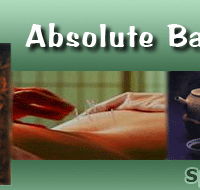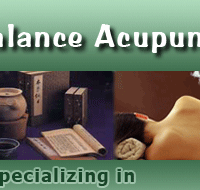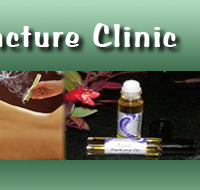| |
|
|
Acupuncture
 During
the acupuncture treatment practitioner inserts hair-thin, disposable
stainless steel needles into specific points on the body that
located mostly along the energy channels (meridians) to improve
and balance the flow of Qi (energy). During
the acupuncture treatment practitioner inserts hair-thin, disposable
stainless steel needles into specific points on the body that
located mostly along the energy channels (meridians) to improve
and balance the flow of Qi (energy).
Unlike the standard
needles used for injections, acupuncture needles are solid and
have a finely tapered point that creates a smooth, painless
insertion without damaging nearby tissues. [Top]
|
|
Auricular
Acupuncture
Also
known as auriculotherapy (ear acupuncture) is a form of oriental
medicine based on the idea that the ear is a microsystem, meaning
that the entire body is represented on the auricle (or auricula,
or pinna - the outer  portion
of the ear) and that the entire body can be treated by stimulation
of the surface of the ear exclusively. portion
of the ear) and that the entire body can be treated by stimulation
of the surface of the ear exclusively.
Used
in treatment and prevention of diseases by stimulation of the
certain acupuncture points in or around the ear with needles,
magnets, ear seeds. Auricular acupuncture could be use as a
stand-alone modality or as a complement to the whole body acupuncture
treatment. Auricular acupuncture is used widely in treatment
of addictions, stress, insomnia, infertility, high blood pressure
etc. [Top]
|
|
Electro-Acupuncture

Used
in combination with the traditional needle acupuncture by sending
a small amount of electric current through the needle to the acupuncture
point. Electro-acupuncture is usually recommended for pain relief
and stroke/paralyses. [Top] |
|
Moxibustion
Moxibustion
is an Oriental medicine heat therapy utilizing moxa, or
mugwort herb.
This
ancient healing technique is believed to even precede
the acupuncture. Moxibustion still plays an important
role in the traditional medical systems of China, Japan,
Korea, Vietnam, Tibet, and Mongolia. During the moxibustion,
the specially processed leaves of Artemisia Vulgaris are
burned at or above the acupuncture points to warm regions
with the intention of stimulating circulation and inducing
a smooth flow of Qi and Blood and to protect body against
Cold and Dampness. |

(Artemisia Vulgaris)
|
| |
 The
word moxa comes from Japanese mogusa (the u is not very strongly
enunciated). The Chinese character for moxa forms one half of
the two making up the Chinese word that often gets translated
as "acupuncture" zhenjiu. The
word moxa comes from Japanese mogusa (the u is not very strongly
enunciated). The Chinese character for moxa forms one half of
the two making up the Chinese word that often gets translated
as "acupuncture" zhenjiu.
Moxa
is used for pain and deficient conditions, and has been clinically
effective for treatment of common conditions such as acute and
chronic pain (frozen shoulder, back pain, carpal tunnel syndrome),
digestive upset (diarrhea, IBS), women's disorders, and sexual
function (impotence, decreased libido). [Top]
|
|
Cupping
 Is
a method of treating diseases by increasing blood circulation
in specific body areas. A special glass or plastic cups/jars
are used to create partial vacuum inside of them and then applied
to the skin for the period up to 20 minutes. This method is
utilized in treating pain conditions, common cold, cough etc.
[Top] Is
a method of treating diseases by increasing blood circulation
in specific body areas. A special glass or plastic cups/jars
are used to create partial vacuum inside of them and then applied
to the skin for the period up to 20 minutes. This method is
utilized in treating pain conditions, common cold, cough etc.
[Top]
|
|
Infrared
Therapy

An
infrared lamp applies gentle heat to the acupuncture points or
tender areas on the body, usually combined with acupuncture. It
is very effective in treatment of the arthritic pain, certain
infertility cases, helps to speed up a wound healing and enhances
general energy levels.[Top] |
|
|
Laser Acupuncture
Sometimes
referred to as soft or cold, with the Low-Level Laser the light
is compressed from a wavelength of the cold, red part of the
spectrum. It is different from natural light in that it is one
precise color; it is coherent (it travels in a straight line),
essentially monochromatic (a very narrow bandwidth of two or
three wavelengths) and polarized (it concentrates its beam in
a defined location or spot.) These properties allow laser light
to penetrate the surface of the skin with no heating effect,
no damage to the skin and no known side effects. Laser light
directs bio-stimulation light energy to the body's cells, which
the cells then convert into chemical energy to promote natural
healing and pain relief.
 The
Low-level light therapy uses cold laser light energy to direct
bio-stimulation light energy to the body's cells without injuring
or damaging them in any way. The energy range of low level laser
light lies between 1 and 500mW (milli-watts), while for surgical
lasers, the energy range lies between 3000 and 10000mW. The
Low-level light therapy uses cold laser light energy to direct
bio-stimulation light energy to the body's cells without injuring
or damaging them in any way. The energy range of low level laser
light lies between 1 and 500mW (milli-watts), while for surgical
lasers, the energy range lies between 3000 and 10000mW.
Low-level
lasers supply energy to the body in the form of non-thermal
photons of light. When pulsed at certain pulse rates the therapy
device optimizes the immune responses of the blood. This has
both anti-inflammatory and immunosuppressive effects. It is
a scientific fact that light transmitted to the blood in this
way has positive effects throughout the whole body, supplying
vital oxygen and energy to every cell.
- Low Level Laser promotes healing in many
conditions because it increases the ATP (adenosine tri-phosphate)
level and activates enzymes in the targeted cells.
- Growth factor response within the cells and
tissue is increased as a result of enhanced ATP and protein
synthesis.
- Improved cell proliferation is apparent.
- Pain (both acute and chronic) relief as result
of increased endorphin release.
- A strengthened immune system response due
to increasing levels of lymphocyte activity.
- There is a pronounced anti-inflammatory and
anti-edematous effect.
With
the application of this laser light to injuries or wounds, soft
tissue healing rate and pain relief are accomplished. Additionally,
the process increases the speed, quality and tensile strength
of tissue repair, increasing the blood supply to the affected
area, stimulating the immune system, nerve function, developing
collagen and muscle tissue, and helping to generate new healthy
cells and tissue and promoting faster wound healing and clot
formation. Low Level Laser Therapy (LLLT) does no damage to
tissue cells and is safe in most applications. The therapy is
precise, accurate, easy to administer and offers safe and effective
treatment for a wide variety of conditions. [Top]
|
|
|
Cranio-Sacral
Therapy
A
very gentle, hands-on therapy that can help to relieve a wide
range of conditions whether physical,  emotional
and/or mental. emotional
and/or mental.
Its a method where a practitioner manually applies a subtle
movement of the spinal and cranial bones to bring the central
nervous system into harmony. This therapy involves assessing
and addressing the movement of the cerebrospinal fluid (CSF),
which can be restricted by trauma to the body, such as through
falls, accidents, and general nervous tension. By gently working
with thespine, the skull and its cranial sutures, diaphragms,
and fascia, the restrictions of nerve passages are eased, the
movement of CSF through the spinal cord can be optimized, and
misaligned bones can be restored to their proper position. This
therapy is particularly useful for mental stress, neck and back
pain, migraines, TMJ syndrome, and for chronic nervous conditions
such as fibromyalgia.
[Top]
|
|
Essential
Oil Therapy
 Aromatherapy,
commonly associated with complementary and alternative medicine
(CAM), is the use of volatile liquid plant materials, known
as essential oils (EOs), and other scented compounds from plants
for the purpose of affecting a person's health or mood. Aromatherapy,
commonly associated with complementary and alternative medicine
(CAM), is the use of volatile liquid plant materials, known
as essential oils (EOs), and other scented compounds from plants
for the purpose of affecting a person's health or mood.
When aromatherapy
is used for the treatment or prevention of disease, a precise
knowledge of the bioactivity and synergy of the essential oils
used, knowledge of the dosage and duration of application, as
well as, naturally, a medical diagnosis, are required.
Essential oils,
phytoncides and other natural volatile organic compounds (VOCs)
work in different ways. At the scent level they activate the
limbic system and emotional centers of the brain. When applied
to the skin (commonly in form of "massage oils" i.e.
1-10% solutions of EO in carrier oil) they activate thermal
receptors, and kill microbes and fungi. Internal application
of essential oil preparations (mainly in pharmacological drugs;
generally not recommended for home use apart from dilution -
1-5% in fats or mineral oils, or hydrosoles) may stimulate the
immune system. [Top]
|
|
|
Gua Sha
Gua
Sha is an ancient medical treatment that is still widely used
by practitioners ofTraditional Chinese Medicine. It is used
even more widely as a "folk" technique, by Chinese,
as a preventive or remedial treatment.
|
|

(Natural Jade
Gua Sha Tools) |
Gua
Sha involves repeated pressured strokes over lubricated
skin with a smooth edge.
The smooth edge is placed against the pre-oiled skin surface,
pressed down firmly, and then moved down the muscles or
along the pathway of theacupuncture meridians, along the
surface of the skin, with each stroke being about 4-6
inches long.
|
|
|
This causes extravasation
of blood from the peripheral capillaries (petechiae) and may
result in sub-cutaneous blemishing (ecchymosis), which usually
takes 2-4 days to fade. Sha rash does not represent capillary
rupture as in bruising, as is evidenced by the immediate fading
of petechiae to echymosis, and the rapid resolution of sha as
compared to bruising. The color of sha varies according to the
severity of the patient's blood stasis -- which may correlate
with the nature, severity and type of their disorder --appearing
from a dark blue-black to a light pink, but is most often a
shade of red. Although the marks on the skin look painful, they
are not. Patients typically feel immediate sense of relief and
change. Gua Sha is not known to be harmful. The technique called
cupping also leaves distinctive, petechial marks on the skin,
but is also harmless. In classical Chinese practice, the Gua
Sha technique is most commonly used to:
- Reduce fever (the technique was used
to treat cholera).
- Treat fatigue caused by exposure to
heat (often used to treat heat-stroke)or cold.
- Cough and dyspnea: bronchitis, asthma,
emphysema .
- Treat muscle and tendon injuries.
- Push sluggish circulation, fibromyalgia
.
- Treat headache.
- Treat stiffness, pain, immobility.
- Treat digestive disorders .
- Treat urinary, gynecological disorders
.
- To assist with reactions to food poisoning.
[Top]
|
|
|




 During
the acupuncture treatment practitioner inserts hair-thin, disposable
stainless steel needles into specific points on the body that
located mostly along the energy channels (meridians) to improve
and balance the flow of Qi (energy).
During
the acupuncture treatment practitioner inserts hair-thin, disposable
stainless steel needles into specific points on the body that
located mostly along the energy channels (meridians) to improve
and balance the flow of Qi (energy).  portion
of the ear) and that the entire body can be treated by stimulation
of the surface of the ear exclusively.
portion
of the ear) and that the entire body can be treated by stimulation
of the surface of the ear exclusively.

 The
word moxa comes from Japanese mogusa (the u is not very strongly
enunciated). The Chinese character for moxa forms one half of
the two making up the Chinese word that often gets translated
as "acupuncture" zhenjiu.
The
word moxa comes from Japanese mogusa (the u is not very strongly
enunciated). The Chinese character for moxa forms one half of
the two making up the Chinese word that often gets translated
as "acupuncture" zhenjiu.
 Is
a method of treating diseases by increasing blood circulation
in specific body areas. A special glass or plastic cups/jars
are used to create partial vacuum inside of them and then applied
to the skin for the period up to 20 minutes. This method is
utilized in treating pain conditions, common cold, cough etc.
Is
a method of treating diseases by increasing blood circulation
in specific body areas. A special glass or plastic cups/jars
are used to create partial vacuum inside of them and then applied
to the skin for the period up to 20 minutes. This method is
utilized in treating pain conditions, common cold, cough etc.

 The
Low-level light therapy uses cold laser light energy to direct
bio-stimulation light energy to the body's cells without injuring
or damaging them in any way. The energy range of low level laser
light lies between 1 and 500mW (milli-watts), while for surgical
lasers, the energy range lies between 3000 and 10000mW.
The
Low-level light therapy uses cold laser light energy to direct
bio-stimulation light energy to the body's cells without injuring
or damaging them in any way. The energy range of low level laser
light lies between 1 and 500mW (milli-watts), while for surgical
lasers, the energy range lies between 3000 and 10000mW. emotional
and/or mental.
emotional
and/or mental.  Aromatherapy,
commonly associated with complementary and alternative medicine
(CAM), is the use of volatile liquid plant materials, known
as essential oils (EOs), and other scented compounds from plants
for the purpose of affecting a person's health or mood.
Aromatherapy,
commonly associated with complementary and alternative medicine
(CAM), is the use of volatile liquid plant materials, known
as essential oils (EOs), and other scented compounds from plants
for the purpose of affecting a person's health or mood. 